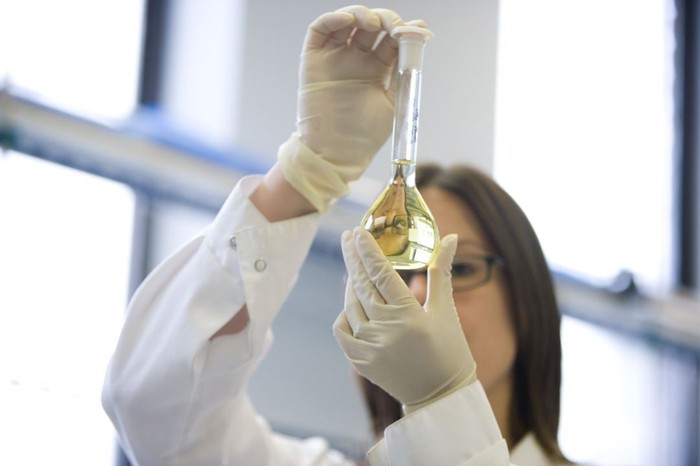The U.S. federal government remains opposed to legalizing marijuana
To our north, Canada became the first industrialized country in the world to give marijuana a green light. The passage of the Cannabis Act, and the official sale of dried cannabis flower for recreational use on Oct. 17, 2018, signaled the dawn of a new era for the marijuana industry.
But in the United States, it’s been business as usual at the federal level. Even though 33 states have legalized medical marijuana to some degree, 11 of which also allow recreational marijuana to be consumed and/or sold, the federal government has stood firm on its belief that cannabis is a Schedule I substance. That means it’s entirely illegal, considered prone to abuse, and is seen as having no recognized medical benefits.
This classification for marijuana comes with a number of challenges for the industry. For one, pot-based companies are pretty much shut out of the banking industry. Even with the federal government taking a hands-off approach to regulation, financial institutions ultimately report to the Federal Deposit Insurance Corporation. As such, they don’t want to risk running into legal or financial trouble by subverting federal law. This means the U.S. weed landscape is dominated by cash, which is both a safety concern and a constrainer of growth.
Marijuana companies are also being subjected to ridiculously high tax rates, courtesy of U.S. tax code 280E. Implemented in the early 1980s to stop drug smugglers from writing off business expenses on their taxes, 280E disallows businesses that sell Schedule I drugs from taking any sort of normal business deductions, save for costs of goods sold. Often, this has led to exceptionally high effective tax rates for profitable marijuana businesses.
Even with an all-time record number of Americans favoring legalization, the federal government has stood firm on its classification of cannabis.

IMAGE SOURCE: GETTY IMAGES.
This DEA decision is more important than you probably realize
There are a number of reasons marijuana remains entirely illicit at the federal level. Chief among them is Republicans’ generally more adverse views on cannabis, relative to Democrats and independents.
But it’s not just political lines that have kept cannabis illegal. The U.S. Drug Enforcement Agency (DEA) had an opportunity to reschedule or de-schedule marijuana back in the summer of 2016 in response to two petitions but chose not to take any action.
However, news out of the DEA this past week might signal that the regulatory agency is changing its tune, or at least softening its stance, on marijuana.
As reported by Forbes, the DEA has requested an annual grow quota of 3,200,000 grams (about 7,055 pounds) for 2020 that’ll be used in scientific studies to examine the risks and benefits of the cannabis plant. What’s so meaningful about this number is that it’s 621% higher than 443,680 gram quota the DEA requested in 2018, and nearly 31% more than the 2.45 million grams requested in 2019. In other words, it would appear that the DEA is getting serious about tackling the primary obstacle to federal legalization in the U.S. by creating a risk-versus-benefit profile for marijuana.
As further evidence of this shift in DEA policy, the number of individuals registered by the DEA to conduct research into cannabis, extracts, and derivatives, has grown by 41% over the past two years.
This announcement also comes just a month after the agency announced that it would finally begin processing licensing applications for new cultivation farms used in federal research. For decades, the University of Mississippi has been the only source of federally legal cannabis production for research purposes, which in itself is a constraint on research capacity. Despite welcoming these applications three years ago, only now will the DEA finally get around to approving new licensed growers for federal research.

IMAGE SOURCE: GW PHARMACEUTICALS.
Is this a tipping point?
The DEA’s boosting its quota for cannabis also comes at a time when the agency is attempting to reduce opioid use. The DEA announced plans to reduce fentanyl production by 31%, hydrocodone by 19%, hydromorphone by 25%, and oxymorphone by 55% in the upcoming year. While purely speculative for the time being, cannabis has loosely been proposed as a potential replacement of opioids in treating a variety of ailments, primarily given the fact that cannabis overdoses don’t lead to deaths, whereas opioid-related overdoses claimed more 47,000 American lives in 2017 alone.
Also helping matters is that the U.S. Food and Drug Administration (FDA) approved the very first cannabis-derived drug in June 2018. GW Pharmaceuticals‘ (NASDAQ:GWPH) Epidiolex wound up reducing seizure frequency by 30% to 40% from baseline in late-stage trials for patients with two rare types of childhood-onset epilepsy. Since GW Pharmaceuticals’ lead drug is cannabidiol (CBD)-based, and the company has multiple other clinical studies ongoing, the company is attempting to singlehandedly demonstrate that cannabis and/or its cannabinoids do have medical benefits.
Now, this isn’t to say that marijuana is a cure-all. Despite success with Epidiolex, GW Pharmaceuticals also witnessed Sativex, a cannabinoid-based oromucosal spray approved in more than a dozen countries outside the U.S., absolutely face-plant in phase 3 trials as a treatment for cancer pain in the United States. Nevertheless, early signs point to cannabis and its cannabinoids as showing promise in treating certain ailments.
The hope is that this increase in research activity by the DEA, coupled with ongoing FDA-approved studies from the likes of GW Pharmaceuticals, will allow regulators to create an encompassing benefits-versus-risk profile for marijuana. The lack of an adequate safety profile has been the scapegoat lawmakers have used in Congress for not pushing forward on marijuana reform measures. Depending on the outcome of this research, it could be game-on for the green rush in the U.S. in the not-so-distant future.


